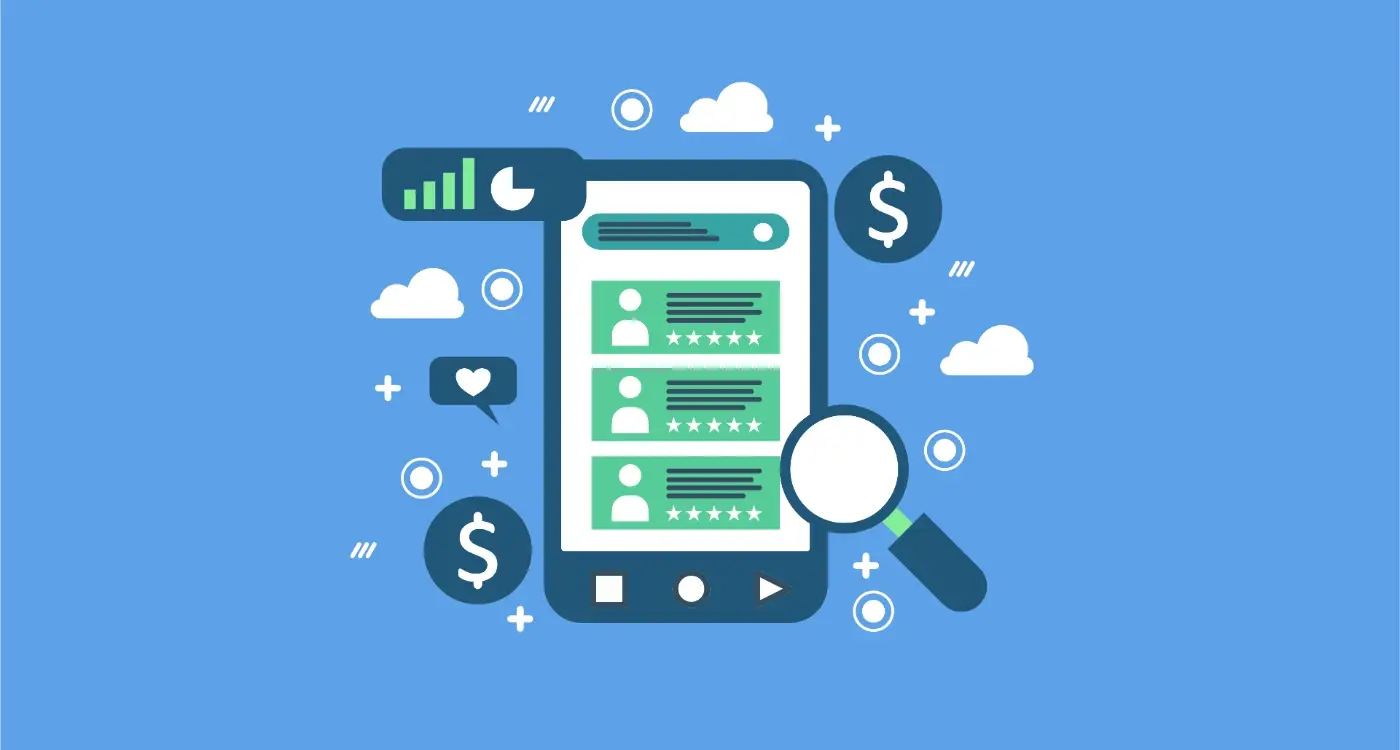How Much Does It Cost To Build A Banking App?
The global mobile banking market is worth over $1.8 trillion and growing at breakneck speed. Every major bank and fintech startup is scrambling to build apps that can capture even a tiny slice of this massive pie. But here's the catch—building a banking app isn't like creating a simple weather app or game. We're talking about handling people's money, which means the stakes are incredibly high.
After working with countless financial institutions and fintech companies over the years, I've seen firsthand how quickly costs can spiral out of control. The development budget for a banking app can range anywhere from £50,000 for a basic MVP to well over £500,000 for a fully-featured platform. That's quite a spread, isn't it?
The difference between a good financial app and a great one often comes down to understanding what features you actually need versus what you think you want
This guide will walk you through every aspect that affects your development budget. We'll explore the basic features that form your foundation, the advanced functionality that sets you apart, and the security requirements that you simply can't ignore. By the end, you'll have a clear picture of what it really takes to build a banking app that users trust with their money.
Understanding Banking App Development Costs
Building a banking app isn't like creating your average mobile application—there's a lot more complexity involved, and that complexity shows up in the price tag. After working with financial institutions for years, I can tell you that most people are genuinely surprised by the costs involved. We're not talking about a simple calculator app here; we're dealing with serious financial software that handles real money and sensitive data.
The truth is, banking apps sit at the expensive end of the development spectrum. You're looking at anywhere from £100,000 to £500,000+ for a fully-featured banking application. Understanding the factors that affect mobile app development costs is crucial for budgeting your project accurately.
What Makes Banking Apps So Expensive?
Banking apps require multiple layers of security, regulatory compliance, and integration with existing banking systems. They need to handle everything from simple balance checks to complex international transfers—all while keeping customer data completely secure. The development process involves specialist knowledge, extensive testing, and ongoing maintenance that most other apps simply don't require.
| App Complexity | Estimated Cost Range | Development Time |
|---|---|---|
| Basic Banking App | £100,000 - £200,000 | 6-12 months |
| Advanced Banking App | £200,000 - £400,000 | 12-18 months |
| Enterprise Banking Platform | £400,000+ | 18+ months |
These figures reflect the reality of what you're building—not just an app, but a complete financial platform that people trust with their money. The investment reflects the complexity, security requirements, and ongoing support that banking applications demand.
Basic Features That Drive Your Budget
When I'm discussing fintech projects with clients, I always start with the basics—the features that every banking app absolutely must have. These aren't the flashy bells and whistles; they're the bread and butter functionality that users expect from any financial app worth their trust.
User registration and authentication form the foundation of your development budget. We're talking about secure login systems, biometric authentication, and password recovery features. This isn't just a simple sign-up form—banking apps need robust identity verification that complies with Know Your Customer (KYC) regulations.
Core Banking Functions
Account management sits at the heart of every banking app. Users need to view their balance, transaction history, and account details seamlessly. Then there's money transfers—both internal transfers between accounts and external payments to other banks. Payment processing capabilities round out the essential trio.
- Account balance and transaction viewing
- Internal and external money transfers
- Bill payment functionality
- Card management and controls
- Customer support chat integration
Start with these core features before adding advanced functionality. A solid foundation will save you money on debugging and rework later in the development process.
Each of these basic features requires careful backend integration with banking systems, which significantly impacts your development budget. The complexity isn't just in the frontend—it's in making everything work securely behind the scenes.
Advanced Features and Their Price Tags
Once you've sorted your basic banking features, you'll probably want to add some fancy bells and whistles—and that's where things get expensive! I've worked on banking apps where clients started with a simple budget, then suddenly wanted AI-powered financial insights and biometric authentication. The costs can spiral quickly if you're not careful.
High-Cost Features That Banks Love
Personal finance management tools are big right now; think spending analytics, budget tracking, and automated savings features. These typically add £15,000-£25,000 to your development budget because they require complex algorithms and data processing. Investment platforms within banking apps are another popular request—but integrating stock trading, portfolio management, and real-time market data can easily cost £30,000-£50,000.
The Really Expensive Stuff
AI chatbots and virtual assistants sound cool, but they're not cheap. A properly trained banking chatbot that can handle customer queries and transactions will set you back £20,000-£40,000. Machine learning for fraud detection is another costly addition—expect to pay £25,000-£45,000 for a system that actually works well.
Here's my advice: start with your core features first. You can always add advanced functionality in version two once you've proven your app works and generates revenue. Understanding what makes the difference between so-so apps and stellar apps can help you prioritise features that truly matter.
Security Requirements and Compliance Costs
Building a financial app isn't like creating a simple game or social media platform—the security requirements alone can add £50,000 to £200,000 to your development budget. Banks and fintech companies must follow strict rules about protecting customer data, and breaking these rules can result in massive fines that make your initial investment look like pocket change.
The main compliance standards you'll need to meet include PCI DSS for payment processing, GDPR for data protection, and various banking regulations depending on your target markets. Understanding what you need to know about GDPR when creating an app is essential for any financial application.
The cost of getting security wrong in fintech far exceeds the cost of getting it right from the start
Ongoing Security Costs
Security isn't a one-time expense either. You'll need regular security audits, penetration testing, and compliance reviews that can cost £10,000 to £30,000 annually. For detailed guidance on security implementation, learning how to develop a secure mobile banking app is crucial for your project's success.
Design Complexity and User Experience Investment
When I'm working with clients on banking apps, one of the biggest cost variables that catches people off guard is design complexity. You might think "it's just buttons and screens, right?" but banking apps need to balance being easy to use with handling incredibly complex financial operations behind the scenes.
Simple vs Complex Design Approaches
A basic banking app with standard login screens, account balances, and transaction lists will cost significantly less than one with custom animations, interactive charts, and personalised dashboards. The difference can be anywhere from £15,000 to £60,000 just for the design phase alone.
But here's where it gets interesting—sometimes spending more on design actually saves money in the long run. A well-designed user interface means fewer customer support calls, higher user satisfaction, and better app store ratings. I've seen banks save thousands in support costs simply because their app was intuitive enough that users didn't need help.
User Experience Research and Testing
The research phase is where many budgets get stretched. User testing sessions, accessibility audits, and usability studies can add £10,000 to £25,000 to your project. But given that banking apps handle people's money, cutting corners here isn't wise. A confusing transfer screen or unclear security prompt can lead to serious problems down the line.
Development Team Structure and Regional Pricing
When I'm working with clients on their fintech projects, one of the biggest surprises is how much location affects their development budget. A banking app that costs £200,000 to build in London might only cost £80,000 in Eastern Europe—and that's for exactly the same features and quality.
Your development team structure plays a huge role here. Most banking apps need at least six key people: a project manager, UI/UX designer, two mobile developers (one for iOS, one for Android), a backend developer, and a quality assurance tester. Some agencies mix these roles, but you'll still need the same skill sets covered.
Regional Pricing Differences
UK and US developers typically charge £80-150 per hour, whilst skilled teams in Poland, Ukraine, or India might charge £25-60 per hour. The catch? Communication can be trickier, and you might need more project management time. I've seen brilliant work come from all regions—it's more about finding the right team than the right postcode.
Team Size Impact
Smaller teams (3-4 people) work well for simple financial apps but struggle with complex banking features. Larger teams (8-12 people) can build faster but cost more to coordinate. Most successful banking apps use a medium-sized team of 5-7 developers over 6-9 months.
Don't just pick the cheapest option—factor in communication costs, time zone differences, and potential delays when comparing regional pricing for your fintech project.
Timeline Impact on Your Development Budget
Here's something I've learnt after years of building banking apps—time really is money, and I mean that quite literally. The timeline you choose for your banking app development will have a massive impact on your overall budget, and not always in the way you might expect.
Most people think that rushing a project will cost more money. And yes, that's partly true. If you want your banking app delivered in six months instead of twelve, you'll need a bigger team working simultaneously on different parts of the app. More developers, more designers, more testers—it all adds up quickly. But here's the twist: taking too long can actually cost you more in the long run.
Common Timeline Scenarios and Their Costs
- Rush job (6-9 months): 40-60% budget increase due to larger team requirements
- Standard timeline (12-18 months): Baseline budget with optimal team size
- Extended timeline (18+ months): 20-30% budget increase from prolonged overhead costs
- Phased approach: Can reduce initial costs by 30-40% but increases long-term expenses
The sweet spot for most banking apps sits around 12-18 months. This gives your team enough time to build quality features without burning through cash on extended project management costs. Banking regulations don't wait for anyone, and neither does your competition.
Conclusion
Building a banking app isn't cheap—and honestly, that's probably not what you wanted to hear when you started reading this guide. But here's the thing: understanding the real costs upfront will save you from nasty surprises later. I've seen too many fintech projects run over budget because someone didn't account for security compliance or underestimated the complexity of integrating with banking systems.
Your development budget will depend on so many factors we've covered—from basic features like account management to advanced AI-powered insights, from regulatory compliance to the development team you choose. A simple banking app might start around £50,000, but if you want something that competes with the big players, you're looking at £150,000 or more.
The financial app market is competitive, but there's still room for innovation. Just make sure you're realistic about what it takes to build something secure, compliant, and user-friendly. Don't cut corners on security—your users' trust is worth more than any budget savings. And remember, the cheapest option isn't always the best value when you're dealing with people's money.
Plan for the long term, build in phases if needed, and choose a development partner who understands fintech inside and out.
Share this
Subscribe To Our Learning Centre
You May Also Like
These Related Guides

How Much Does It Really Cost to Build a Fintech App?

How Much More Do Insurance Apps Cost to Build?



